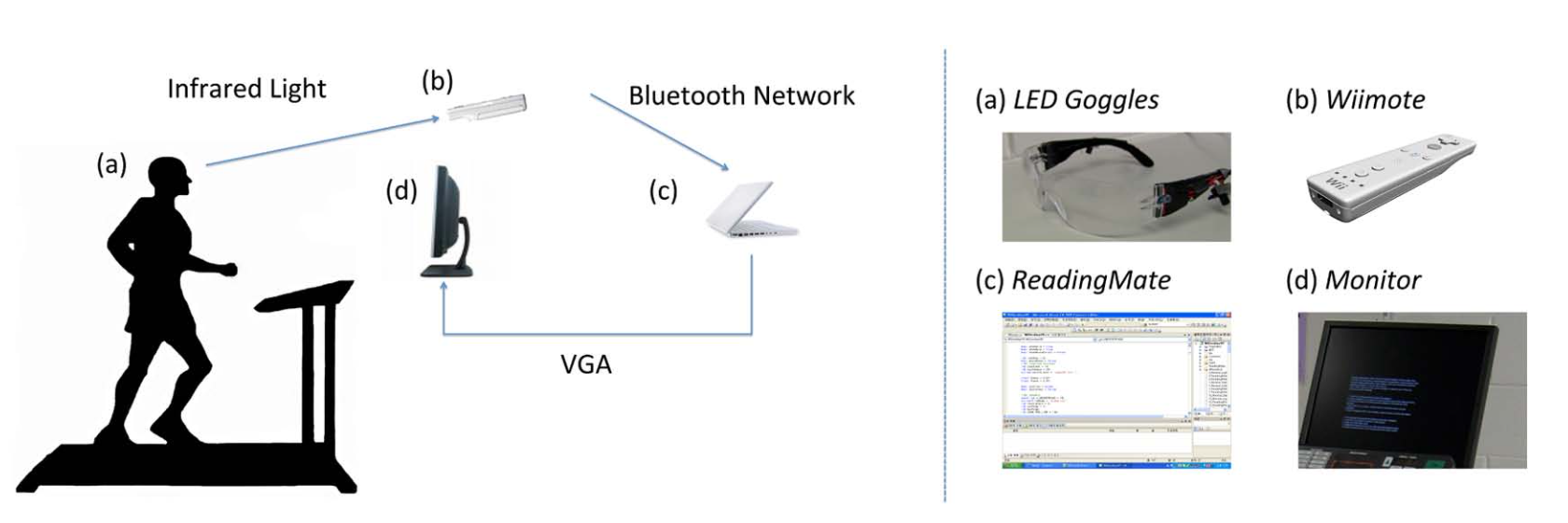 A diagram showing how ReadingMate works.
A diagram showing how ReadingMate works.
Abstract
The aim of this study was to investigate the effects of font size, interline spacing, and a technology called ReadingMate on the letter-counting task performance of users running on a treadmill. Few researchers have investigated how runners read text while running on a treadmill. Our previous studies showed that ReadingMate had positive effects on the reading-while-running experience; however, the effect of other text conditions (i.e., font size and interline spacing) and the interplay between ReadingMate and such text conditions on the letter-counting task performance are not clearly understood. Fifteen participants were recruited for the experiment. There were three main factors: display types (normal and ReadingMate), font sizes (8, 12, 16, and 20 point), and interline spacing (1.0×, 1.5×, 2.0×, and 2.5×).The researchers employed a letter-counting task. The performance was measured regarding task performance time, success rate of counting the target letter f, and number of give-ups. Overall, the letter-counting task performance while running on a treadmill improved as font size and interline spacing increased, as expected. ReadingMate was more effective than normal display particularly when text was displayed in a small font size and with dense interline spacing. When text must be displayed in a small font size and with dense interline spacing, ReadingMate can be used to improve the users’ task performance. Practical applications of ReadingMate include improving the text-reading experience in shaky environments, such as in aviation, construction, and transportation.